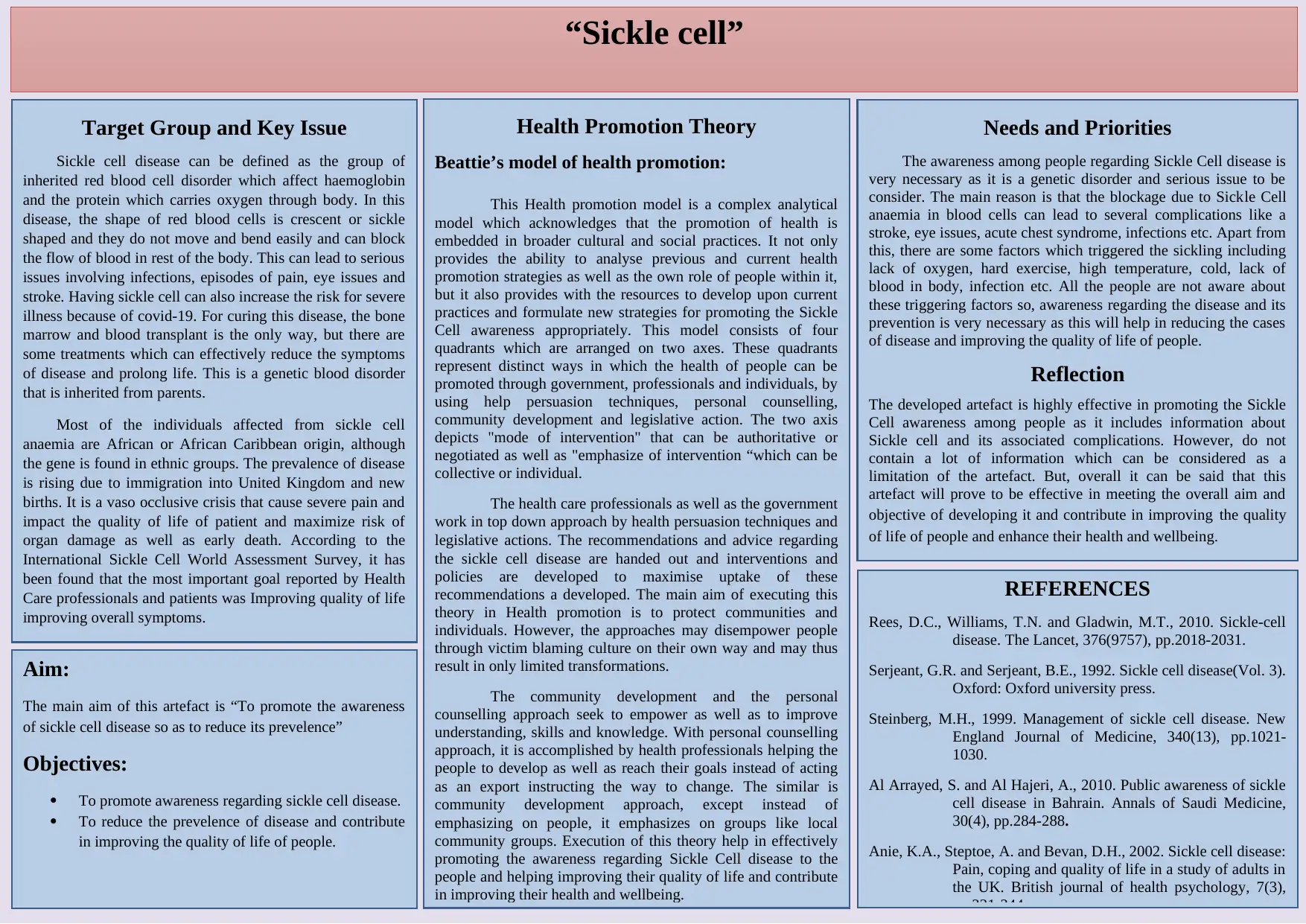Promoting Sickle Cell Awareness
VerifiedAdded on 2023/01/04
|1
|1061
|45
AI Summary
This article aims to promote awareness of sickle cell disease and reduce its prevalence. It discusses the disease, its complications, and the importance of awareness. The article also explores the Beattie's model of health promotion and its application in promoting sickle cell awareness. The main objective is to improve the quality of life of individuals affected by sickle cell disease.
Contribute Materials
Your contribution can guide someone’s learning journey. Share your
documents today.
1 out of 1







![[object Object]](/_next/static/media/star-bottom.7253800d.svg)